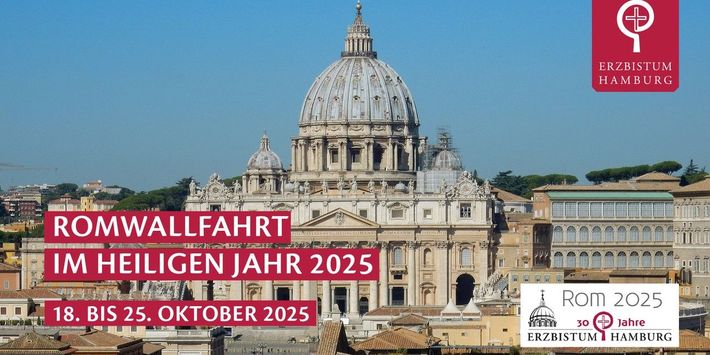Holy Saturday, the day that falls between Good Friday and Easter Sunday, is a significant day in the Christian liturgical calendar. In 2025, this day will be observed on April 19. It is a time marked by reflection, mourning, and preparation for the joyous celebration of the resurrection of Jesus Christ. This article explores the historical, spiritual, and cultural significance of Holy Saturday, along with its implications for personal renewal and communal reflection.
The Historical Significance of Holy Saturday
Holy Saturday has deep roots in Christian tradition, tracing back to the early Church’s observance of the passion and resurrection of Jesus. It is a day that commemorates the time Jesus spent in the tomb after his crucifixion, leading to the resurrection celebrated on Easter Sunday.
- Transition from Mourning to Joy: Holy Saturday serves as a bridge between the sorrow of Good Friday and the joy of Easter. It is a time to reflect on the significance of Christ’s sacrifice and the hope of resurrection.
- The Easter Vigil: Many Christian denominations hold an Easter Vigil on Holy Saturday night, which is one of the most important liturgical celebrations in the Christian calendar. This vigil often includes the lighting of the Paschal candle, symbolizing Christ as the light of the world.
- Historical Practices: Throughout history, Holy Saturday has been a day of fasting and penance, allowing believers to prepare spiritually for the celebration of Easter. In many cultures, it is a time for prayer and reflection.
Spiritual Reflections on Holy Saturday

Holy Saturday invites individuals to engage in deep spiritual reflection. This day can be viewed as an opportunity to contemplate themes of waiting, hope, and renewal.
- Waiting in Silence: Just as the disciples waited in silence after Jesus’ death, Holy Saturday is a day for believers to embrace the silence and stillness that allows for introspection and prayer.
- Hope in Despair: The somber nature of Holy Saturday reminds Christians that even in times of despair, hope is always present. This can serve as a powerful reminder in personal struggles and challenges.
- Renewal Through Reflection: Engaging in spiritual practices such as prayer, meditation, or reading scripture can lead to personal renewal. Reflecting on the themes of sacrifice and redemption can inspire believers to deepen their faith.
Cultural Observances of Holy Saturday
Different cultures and denominations celebrate Holy Saturday in various ways, each bringing unique traditions and practices that enrich the overall observance.
- Lighting of the Paschal Candle: In many Christian traditions, the Paschal candle is lit during the Easter Vigil, symbolizing the resurrection of Christ. This act is often accompanied by hymns and prayers, creating a powerful communal experience.
- Food Traditions: In some cultures, special foods are prepared on Holy Saturday in anticipation of Easter Sunday. For example, in Eastern European countries, traditional dishes may include dishes that are symbolic of the resurrection.
- Family Gatherings: Holy Saturday often brings families together for prayer or meals, reinforcing the importance of community and shared faith.
Personal Renewal on Holy Saturday

Holy Saturday is an excellent opportunity for personal renewal. Here are some ways individuals can embrace this day for personal growth:
- Journaling: Writing down thoughts and feelings can help individuals process emotions, reflect on their spiritual journey, and set intentions for the future.
- Acts of Kindness: Engaging in acts of kindness or service can create a sense of fulfillment and connection to the broader community. This may include volunteering or simply reaching out to friends and family.
- Mindfulness Practices: Incorporating mindfulness practices such as meditation or yoga can help cultivate inner peace and promote mental clarity.
Case Studies: Holy Saturday Observances Around the World

Observances of Holy Saturday vary widely across different cultures and denominations, providing a rich tapestry of traditions that highlight the day’s significance.
The Easter Vigil in the Catholic Church
In the Catholic Church, the Easter Vigil is a profound and moving experience. The vigil typically includes four parts:
- Service of Light: The lighting of the fire and the Paschal candle symbolizes Christ’s resurrection.
- Liturgy of the Word: Several readings from Scripture recount the history of salvation.
- Baptism and Confirmation: New members are welcomed into the Church through baptism, symbolizing the new life in Christ.
- Celebration of the Eucharist: The vigil culminates in the celebration of the Eucharist, emphasizing the community’s shared faith.
Orthodox Easter Traditions
In Eastern Orthodox traditions, Holy Saturday is a day of solemnity, marked by the “Great Saturday” observance. Key features include:
- Midnight Office: The midnight service leads into the joyous celebration of the Resurrection at midnight, often accompanied by a procession around the church.
- Red Eggs: The tradition of dyeing eggs red symbolizes the blood of Christ and the new life of the resurrection.
Protestant Observances
In many Protestant denominations, Holy Saturday is often a quieter day of reflection, with some churches holding services or prayer meetings. Examples include:
- Contemplative Services: Some congregations offer contemplative prayer services that focus on meditation and reflection.
- Community Service: Engaging in community service projects can be a meaningful way to embody the spirit of renewal and hope during this period.
Statistics and Trends in Holy Saturday Observance

Understanding the trends in how believers observe Holy Saturday can shed light on the evolving nature of religious practices.
- Increased Participation: According to a recent survey, over 60% of Christians participate in Holy Saturday services, an increase from previous years, indicating a growing emphasis on this day.
- Digital Engagement: Many churches have embraced digital platforms for Holy Saturday observances, with online services seeing a significant uptick in attendance, particularly during the pandemic.
- Focus on Community: A growing trend is the emphasis on community involvement, with many congregations organizing events that encourage members to engage with their local communities.
Conclusion: Embracing Holy Saturday for Reflection and Renewal
Holy Saturday in 2025 offers a unique opportunity for Christians to engage in reflection and renewal as they prepare for the celebration of Easter. This day serves as a reminder of the profound themes of hope, sacrifice, and resurrection that are central to the Christian faith. Through various traditions and practices, believers can find renewed meaning in their spiritual journey, fostering a deeper connection to their faith and community.
As we approach this sacred day, let us embrace the silence of Holy Saturday, allowing it to be a time for introspection and preparation. Whether through communal observances, personal reflection, or acts of kindness, Holy Saturday invites us all to renew our spirits and ready ourselves for the joy of resurrection. In this way, we can carry the message of hope and renewal not just for one day, but throughout our lives.


